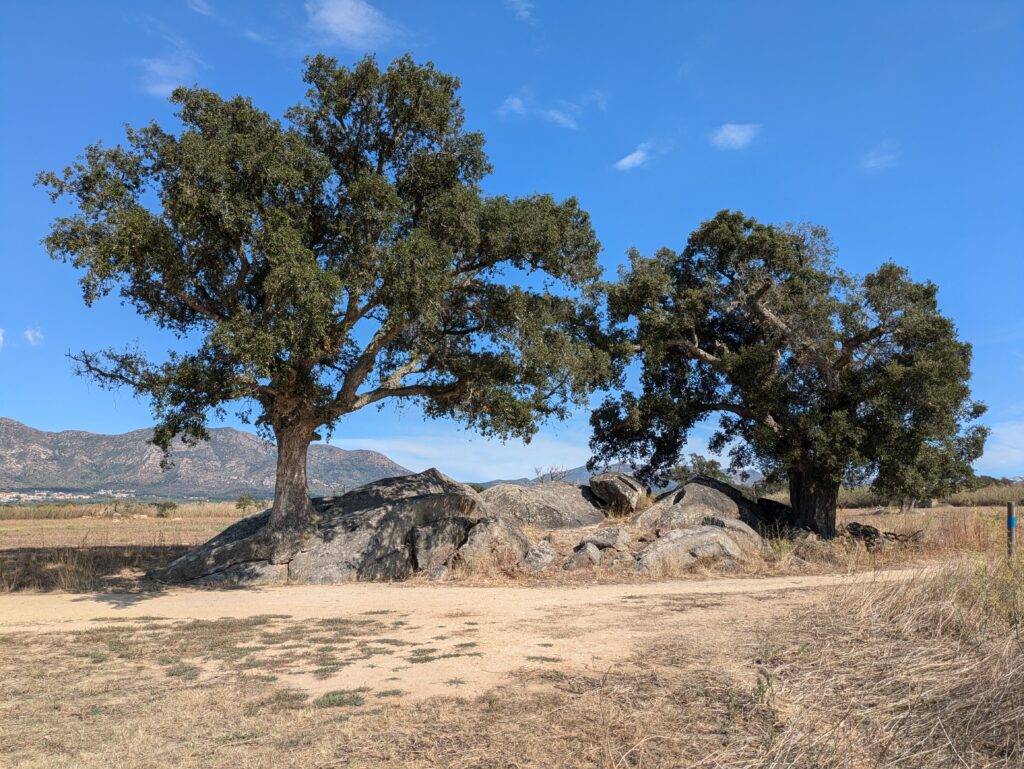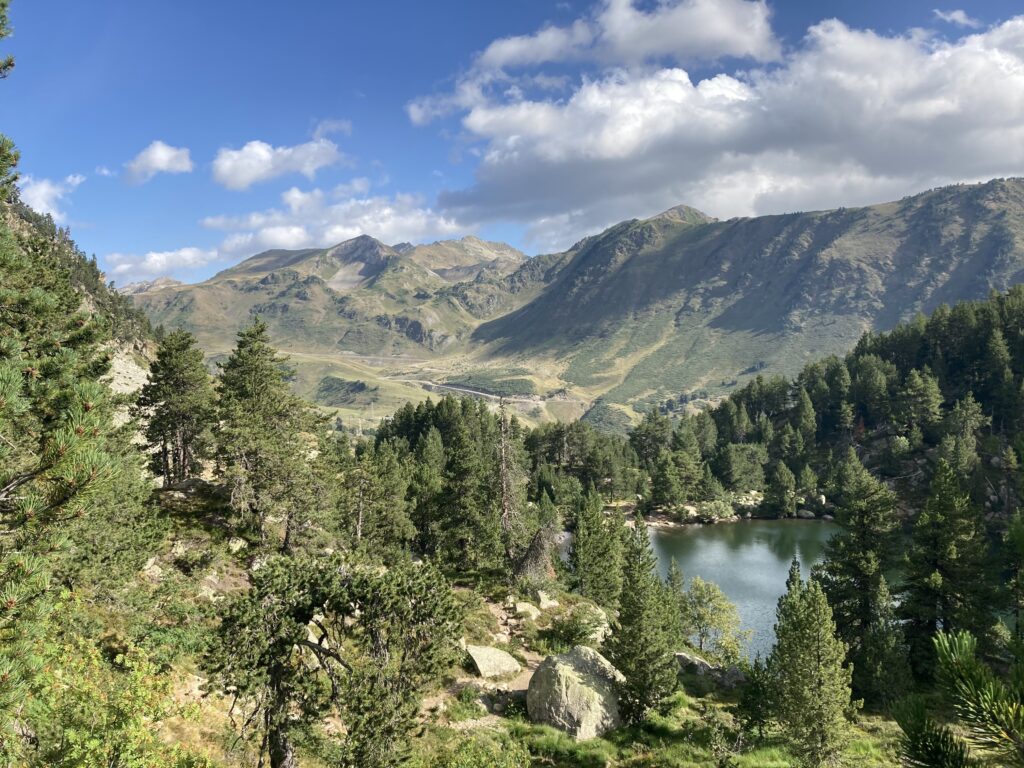Building Climate Resilience in Catalonia
Catalonia combines nature-based solutions and innovation to strengthen local resilience against climate-driven extreme weather events.
In August 2023, a group of biologists and geographers warned that the Aneto Glacier – the largest in Spain – is in a terminal state and will most likely disappear completely within the next ten years. The glacier lies at the eastern border of Catalonia, in the autonomous community of Aragón, around 20 km from the Val d’Aran. Its fast retreat exemplifies the rapid transformations occurring in high-altitude ecosystems across the region, driven by climate change and increasing human pressure. Within Catalonia’s mountain areas, lakes are suffering from pollution, fish stocking, the use of insecticides, and rising water temperatures. Rivers are experiencing a steady decline in snow and ice cover, reduced flows, increased water temperatures, and more frequent flash floods and riverbank erosion.
Extreme drought and torrential rain
Catalonia cannot be defined solely by its mountains. The region is characterised by a remarkable diversity of landscapes, shaped by its varied topography, climates, soils, and proximity to the sea. This ecological richness supports a high level of biodiversity and highly developed agricultural, livestock, industrial, and tourism sectors across its rural and urban regions, with the latter often being the reason for the destruction of the former.
Human activity has long placed pressure on Catalonia’s ecosystems and biodiversity, but climate change has significantly compounded these challenges. Catalonia ranks among the European regions with the highest number of warm days between 1960 and 2017and is one of the areas where the frequency of heatwaves is rising most rapidly. In 2022, the region experienced a record-breaking heat spell, with temperatures 2.7°C above the seasonal norm.
Catalonia ranks among the European regions with the highest number of warm days between 1960 and 2017 and is one of the areas where the frequency of heatwaves is rising most rapidly.
Rising temperatures are being exacerbated by increasingly irregular rainfall. Precipitation levels are in decline, and Catalonia faced one of the most prolonged droughts on record, from early 2021 to 2024. Consequentially, one of the most evident effects of climate change in Catalonia is water scarcity, which was already a tangible reality for 80% of the region’s population. On 1 February 2024, the Catalan government declared a drought emergency, enforcing restrictions on water use in households, agriculture, industry, and for recreational purposes. Although the emergency status was officially lifted in April 2025 following a rise in reservoir levels, citizens are still asked to conserve water in their daily lives.

Paradoxically, this prolonged water scarcity coexists with episodes of torrential rainfall . These typically take the form of intense, localised storms often resulting in flash floods as seen in Barcelona in November 2024. Such storms are commonly associated with the weather phenomenon known as DANA (Depresión Aislada en Niveles Altos) or “cold drop”, where cold air collides with the warm, humid air over the Mediterranean. While DANAs are not new, the increasing intensity and frequency of these extreme weather events can be attributed to climate change.
Building community resilience to weather-related risks
Extreme weather events have wide-reaching and often devastating impacts. In October 2024, torrential rains in Valencia triggered Spain’s worst floods in decades, leading to the death of 224 people, and causing widespread destruction of homes, roads, and natural landscapes. While the immediate consequences of such disasters often prompt short-term emergency responses, their long-term effects are far-reaching. Extreme weather events have long-lasting economic, social, environmental, and health consequences such as land degradation, biodiversity loss, infrastructure damage, economic disruption, public health crises, and displacement of populations.
In Catalonia, two EU-funded projects are turning to nature and technology to build resilience to the ever-growing threat of flooding. By harnessing the power and nature and technology, these projects are piloting new ways to adapt to and mitigate existing climate risks, and ensure communities are protected.
Untapping nature’s potential to reduce climate risks
In Mediterranean regions across Europe, the EU-funded Med-IREN project is working with nature through the development, upscaling, and replication of nature-based solutions (NBS) to reduce disasters stemming from more frequent extreme weather events. This is especially relevant given that much of the grey infrastructure built to defend against these risks has been increasingly unable to keep pace with the accelerating impacts of climate change.

The project is exploring how nature-inspired solutions can be integrated with engineering practices to protect communities from floods, wildfires and other climate hazards. In Granollers, the capital of Catalonia’s Vallès Oriental region, northeast of Barcelona, the project team is restoring riverbanks and applying phytoremediation techniques at Can Cabanyes, an eight-hectare riverside nature reserve south of the city.
By planting carefully selected vegetation, the MED-IREN is protecting the reclaimed water distribution system from erosion and flooding. In addition, these plants also help filter and remove contaminants from the water, reducing the need for chemical treatments in polluted areas. Plans are also underway to create a second wetland within the nature reserve to further support water purification and improve flood and erosion control.
Thanasis Sfetsos, Research Director at NCSR Demokritos, the coordinating partner of Med-IREN highlights the power of NBS to strengthen climate-proof Mediterranean infrastructures.
“Nature has an abundant force that can put our survival at risk. But it also has tremendous potential, if we know how to work with it. With over 1.6 million people having been affected by floods across Europe last year, floods pose a prime risk. To address this hazard, we will use nature walls at riverbanks to absorb water and prevent flooding. We will also use different endemic plants to filter water and reuse it for irrigation in order to deal with droughts.”
Nature has an abundant force that can put our survival at risk. But it also has tremendous potential, if we know how to work with it.
Thanasis Sfetsos, Research Director at NCSR Demokritos, the coordinating partner of Med-IREN.
From reaction to action: Anticipating and mitigating climate risks
Addressing risks and impacts of extreme weather events through nature-based solutions is one way of climate adaptation. Another equally important strategy is to mitigate the impacts of climate hazards by using technological innovations to inform users and stakeholders prior to the event.
This approach requires a shift from reactive to proactive strategies – moving beyond simply responding to emergencies after extreme weather events occur, and instead focusing on anticipation, preparation, and reduction their impacts in advance. Two neighbouring Catalan municipalities: Terrassa and Blanes – are doing just that. Both towns are increasingly vulnerable to recurring heatwaves, wildfires, droughts, and flash floods. As part of the EU-funded RESIST project, launched in 2023, they are developing climate adaptation measures, with the aim of strengthening and expanding early warning systems, raising awareness among residents and local institutions, and enhancing community resilience to weather-related risks.
One of the key innovations developed and implemented by the project partners is the Argos tool, a system created by Hyds, a Spanish company specialising in hydrometeorology and partner of the RESIST project. Argos enables early warning and decision support for extreme weather events, helping local authorities and citizens respond more effectively. By integrating real-time data, from emergency calls, meteorological models, radar readings, and sensor inputs, Argos combines the functions of an early warning system and a decision support system in a single platform.
Xavi Llort, R&D Manager at Hyds explains the tool’s purpose, “What Argos aims to do is help emergency managers prepare for these emergencies, firstly, when it comes to anticipate them, as it is an early warning system that provides information and alerts about the possible impact of an event. It also helps with decision-making support, providing users with updated information about a situation, possible impacts, and on-going impacts. And from there, users can make more informed decisions about actions that can mitigate potential impacts.”
What Argos aims to do is help emergency managers prepare for these emergencies, firstly, when it comes to anticipate them, as it is an early warning system that provides information and alerts about the possible impact of an event.
Xavi Llort, R&D Manager at Hyds.
Argos is explicitly designed to support users in their role as active decision-makers during extreme weather events. However, for the tool to be effective, it requires an engaged and coordinated community, including citizens as well as local actors such as municipalities, civil protection units, and community organisations.
That is why the RESIST project adopts a participatory and inclusive approach to climate adaptation. It brings together residents, community organisations and initiatives, and public servants from different administrations in dialogue tables, focus groups, and workshops to explain extreme weather events as well as to discuss and rethink collectively how to adapt to future challenges.
Although Catalonia is one of the European regions most exposed to climate-related risks, by implementing diverse strategies that combine sustainable technological innovation and nature-based solutions the region is enabling a proactive response for local communities to actively build resilience to the increasing pace and intensity of climate change.
